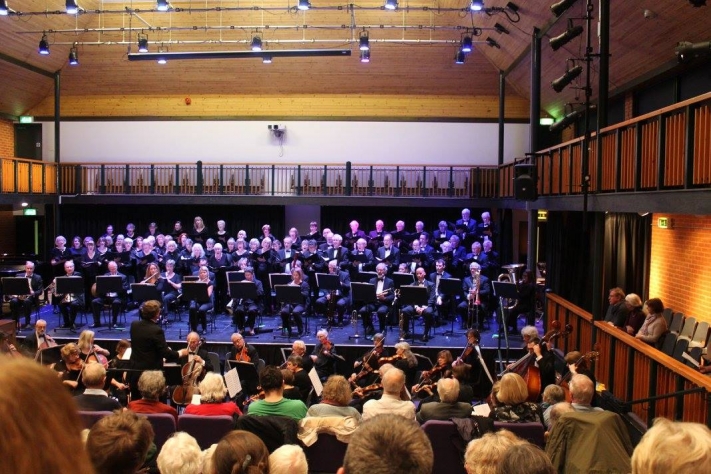We started with Brahms in the form of his Symphony No. 1, composed over a period of 14 years (1862 to 1876). Both outer movements of the work have slow intros, and into this one we launched, the upper strings a little wheezy at the start. Then a sudden accent launched us into the allegro. The music hereabouts is severe in character, but has energy. Soon there came an oboe solo from Gillian Evison who was excellent all concert-long, developing into an expressive little dialogue with a clarinet (Gemma Willis, also very good here and later), and then hushed strings preceded a solo horn (John Bleach). The lyrical andante slipped by serenely.
Unusually for a 19th century symphony, the Finale is comfortably the most substantial of the movements, and interest came in the form of Brahms' strangely breathless figure on pizzicato strings, nicely played as the upper and lower strings sparred with one another, and accompanied by growling bassoons second time round, played suitably urgently. After a Sibelian horn call and then flute solo from Sue Hurst, we pressed on to 'the big tune', a noble affair and almost rhapsodic. Conductor Alexander Walker, a rather hunched figure on the podium, keener on short jabbing movements with baton and left hand than anything more expansive, here became hyper-animated as we ran on headlong with blazing brass and strings, the pair of trombones at last prominent. Is this Brahms' expression of joy at having finished the thing after 14 years and toil and frustration?
Only in his Creation and the series of six great masses written towards the latter part of his longish life did Josef Haydn manage, in my view, to elevate himself to the level upon which W.A. Mozart habitually operated, and of course the 1798 Missa in Angustiis ['Mass in time of trouble' or 'straightened circumstances': the Latin phrase is ambiguous], a.k.a the Nelson Mass, is one of the shining peaks even of those masses.
This is a piece primarily for choir and soprano, with the mezzo, tenor and bass soloists taking a subsidiary role. Alexander Walker set a pulsating pace in respect of the high drama of the Kyrie opening with its urgently bouncing violin chords, the choir hitting the ground running. The soprano is mainly used in short bursts rather than extended arias, though the florid appeals for mercy in the coloratura passages of the Kyrie stand out, as did the brief but intense duet with the bass in the Qui Tollis Peccata Mundi. I've attended many Nelson Masses, and French soprano Faustine de Monès was not far off as good as I've heard. Her voice was flexible over Haydn's awkward semiquaver corkscrews, and she mainly dealt easily with the rushes up and down the register. In the glorious Et incarnatus est, Haydn really exerts himself for this key tenet of the Christian faith, and here she put her heart and soul into it, accompanied by obligatos for cello and violin solo.
Baritone Michael Dewis' delivery of the Qui Tollis Peccata Mundi was strong, though he offered some slightly odd enunciation of his repetition of the Qui sedes.... and possibly lacked a bit of staying power on some of his notes. Our 65-strong choir, vigorous throughout and nuanced in the part singing, coped admirably with the crescendo and diminuendo indications of the Sanctus, and then in the Benedictus which dominates the later stages we heard the celebrated thunder of conjoined trumpets and timpani.
A first rate concert in this smart, modern auditorium, with a big turnout and a notably cheery atmosphere generated by the ADMS. They're having fun while forming one of the pillars of Oxfordshire amateur music.




